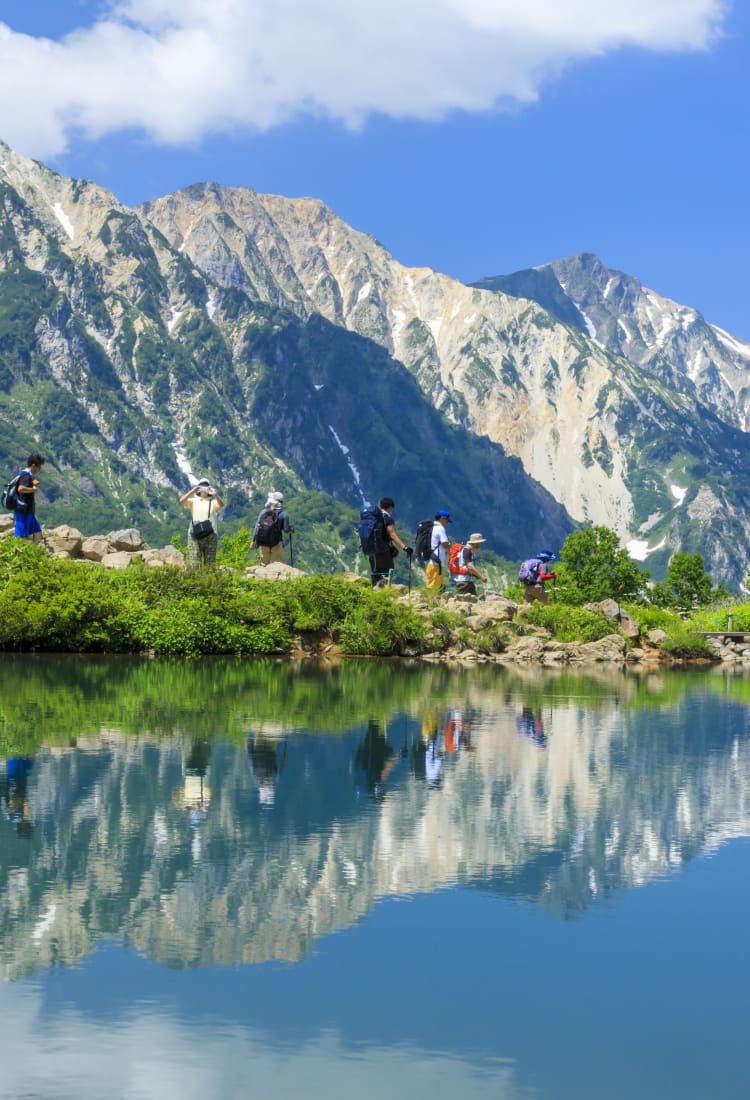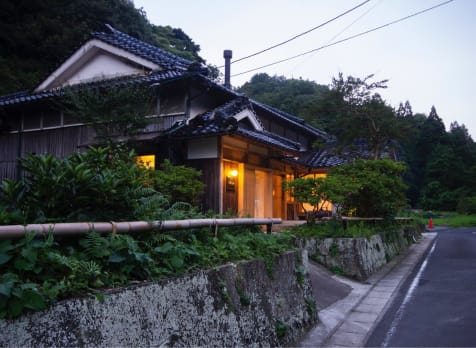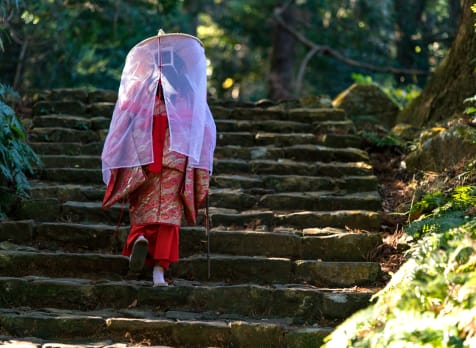Japan's mountainous terrain makes it an appealing destination for hikers and trekkers
Mountains are within reach of all Japan's major cities, so those seeking opportunities to scale peaks have plenty of options. Whatever your hiking level, there are a variety of routes to explore, from leisurely strolls to more challenging climbs for seasoned hikers and climbers.
Along with the thrill of adventure, hiking offers a fascinating new perspective on Japan. Mountain hikes reveal natural phenomena, such as stunning waterfalls, steaming geysers, crystal clear rivers and breathtaking views. The scenery changes dramatically with the seasons—you'll see colorful leaves in the fall, snow in the winter and flowers in the spring.
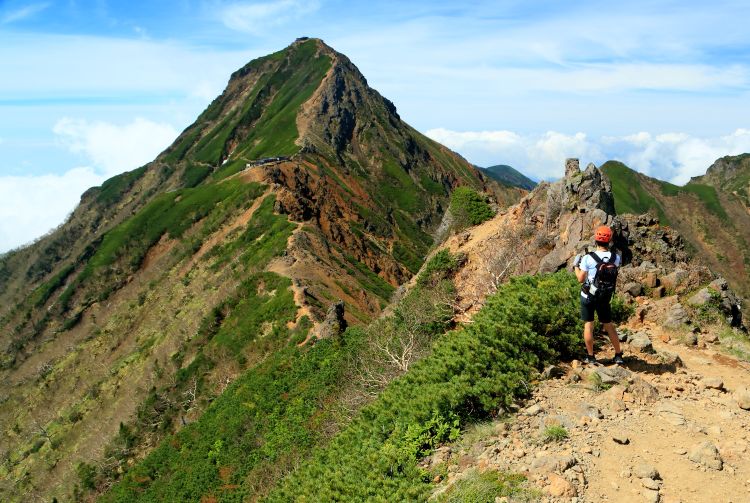
There are variety of hiking trails across Japan
Famous hikes across the country
There's no shortage of options for hikers in Japan, but there are a handful of iconic trails that hold particular prestige for those who complete them. Some require multiple days and are recommended for accomplished hikers only, while others offer numerous paths so trekkers of all abilities can finish them.
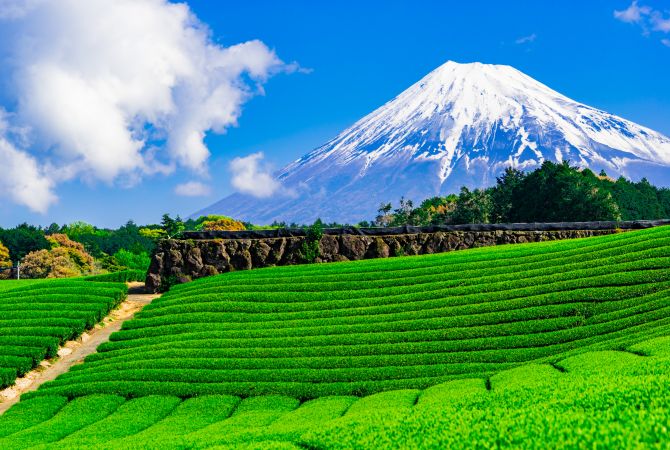

One famous hike is the challenging Mt. Fuji climb
Climbing Mt. Fuji
2-300,000 people head to Mt. Fuji every year to conquer this famous hike. The official Mt. Fuji climbing season starts in early July and lasts until early September. Most people tackling Mt. Fuji via the popular Yoshida Trail start from the Fuji-Subaru Line 5th Station, where souvenir and food shops make for a good opportunity to stock up before you start your ascent. It's a challenging hike, but one that feels rewarding once you get to the top and see the landscape in front of you.
It's not an excursion to make spontaneously. This challenging hike requires specialized equipment, as even the shorter routes last around eight hours. If you plan, you can reserve a space in a hut to rest (don't expect much sleep in these cramped, shared rooms) along the mountain trail. The trails get very crowded so, if you have the option, avoid weekends and holidays.
A holy trek spanning multiple days
The Kumano area's trio of shrines have been the site of religious pilgrimages for more than 1,000 years, and it remains hugely popular with hikers. Many of its six main routes span the country's largest peninsula in each prefecture, offering incredible views.
The traditional hike along the Kumano Kodo lasts around five days, but visitors can opt for shorter treks too, including ones requiring no overnight stays. It's possible to do it by yourself, but there are plenty of outfitters that provide guided trips, which takes the guesswork out of planning and makes the hike a more comfortable experience. The routes are open all year, though they get far more crowded on weekends and holidays. Even on busier days, it's worth joining the crowds to experience one of Asia's most spiritual walks.
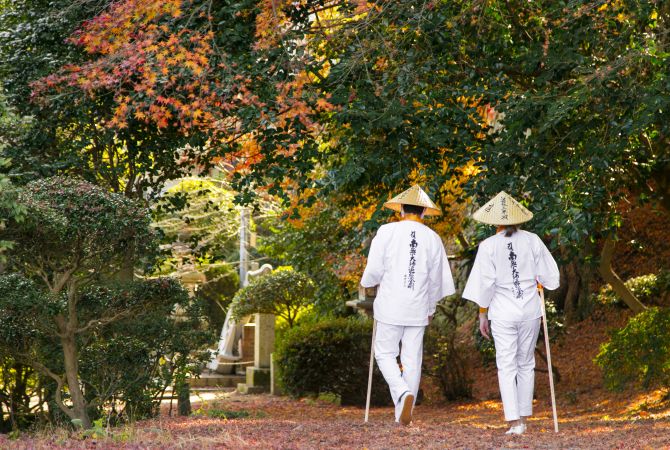

Hikes can range from a few hours to days or even weeks
88 temples across four prefectures
A hiking trail that requires some real commitment is the Shikoku Pilgrimage (known as the “Shikoku Henro” in Japanese), which spans the entire Shikoku region. This ancient trek circles around the island's four prefectures—Ehime, Kagawa, Kochi, and Tokushima—with 88 holy temples along the way. It's a demanding undertaking, but a spiritually fulfilling one.
The 88-temple pilgrimage allows for a lot of flexibility. Walkers can start this circular route anywhere they want and move in the direction of their choice. Completing the hike on foot is the classic way to do it, though expect to spend upwards of 45 days navigating around Shikoku. Alternatively, do as most hikers do and supplement your walks with public transportation. Either way, it's a solid opportunity to take in the beauty of Shikoku.
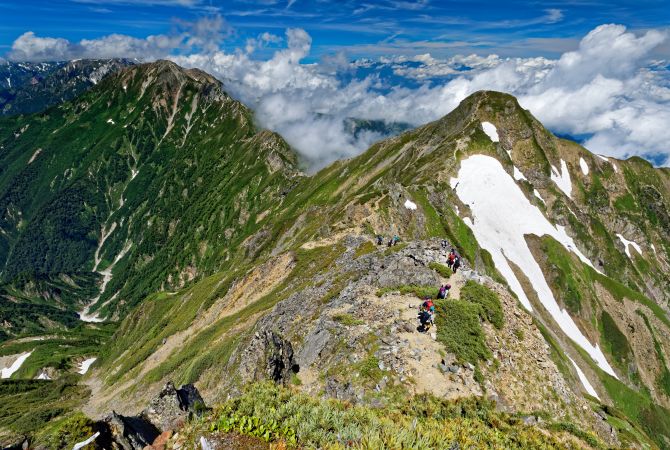
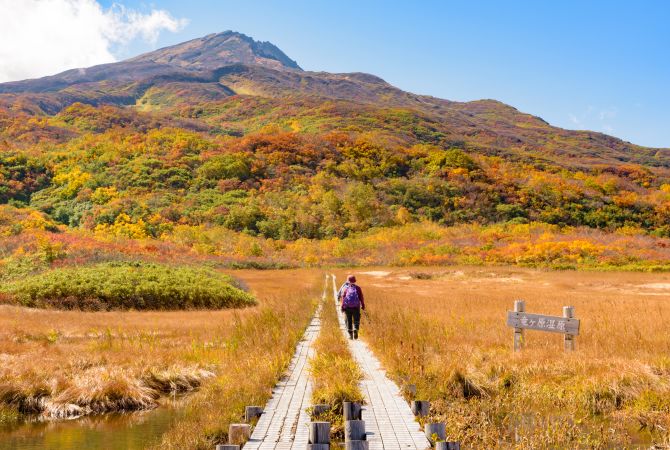
The Japan Alps span six prefectures
A lush range of mountains
The Japan Alps , in the central region of the nation's main island, offers numerous hiking opportunities. The range stretches across six prefectures, divided into the Southern, Central and Northern Japan Alps. It's a sprawling area with an abundance of routes and paths to trek, along with plenty of temples and shrines, and traditional post towns.
The majority of the Japan Alps runs through Nagano prefecture, so those hoping to experience the most variety should go from there. The Hida Mountains, to the north, have some of the country's beloved hiking routes. To the south are the slightly more temperate Akaishi Mountains and beyond that, some beautiful rivers and lakes.

Japan's less famous routes are often far less crowded
Going off the beaten path
Not all of Japan's hikes are crowded. Across the archipelago you'll find opportunities that might not get the attention of Mt. Fuji, but still have their charm.
In the northern Japanese Alps, Kamikochi Valley offers postcard-ready views of mountains and rivers. Kamikochi is open from April until mid-November. There are multiple hiking routes, including scenic paths running past the Taisho Pond. Keep an eye out for wild monkeys and a colorful array of birds. If you can deal with crowds, come during autumn to take in the spectacular fall colors.
In the middle of Hokkaido is the Daisetsuzan National Park . It's the largest national park in Japan, and among its many attractions are several mountain peaks to climb. The centerpiece is Mt. Asahi, the highest peak in Hokkaido. It's a favorite hiking spot in summer and transforms into a skiing and snowboarding haven in winter. The area is home to natural hot springs and multiple animal species not found elsewhere. Its rugged, mountain terrain is breathtaking any time of year.
Japan's far-flung corners have some of Japan's best hiking options. Yakushima , in Kagoshima Prefecture , can be accessed by boat or plane. Easy-to-navigate paths wind through the ancient cedar forests covering the island. More intrepid hikers can attempt Yakushima's steeper mountains, too.

Trails range from gentle strolls to expert-level climbs
Mt. Kita, in the southern Japan Alps of Yamanashi prefecture, is the second-highest mountain in Japan. It's a popular hiking destination, providing three main routes to the summit, past forests, and a river. Near the top, there are huts where you can stay along with a camping area.
The Shiretoko Peninsula , on the eastern edge of Hokkaido, is home to several impressive mountains, including Mt. Rausu. Numerous paths can be found in this part of the country, though it is advised you go with a guide as brown bears live here. The park area, where you can see the picturesque Shiretoko Goko Lakes, makes for a more relaxed stroll. In the summer, waterfalls are the central attraction, while in colder months the drift ice is the biggest draw.
Mt. Daisen , in the Western prefecture of Tottori, is the tallest mountain in the Chugoku Region. This spiritual spot, home to a large Buddhist temple and a Shinto shrine, attracts people from across the country, so it's a good idea to work these holy spots into your hike. Climbers can scale ridges for gorgeous views of the surrounding region. It's striking during fall when the leaves change color.
Mt. Aso in Kumamoto Prefecture is an active volcano that had an explosive eruption in 2016, and experience pyroclastic flows in 2021. There are hiking routes that visitors can enjoy when it is deemed safe to do so. Besides trekking, you can ride horses at the base of the mountain or take in the green fields.
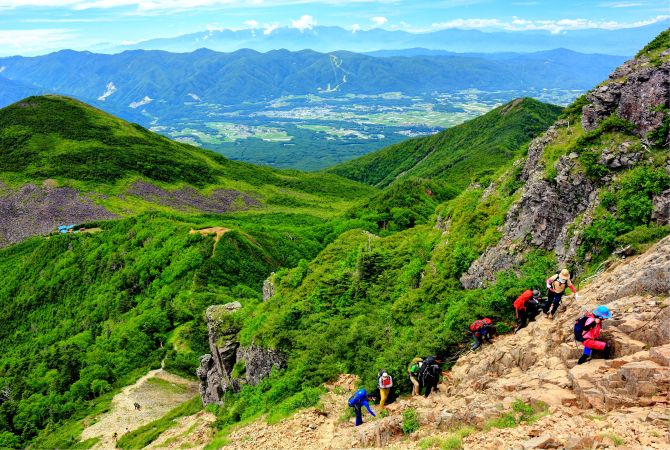
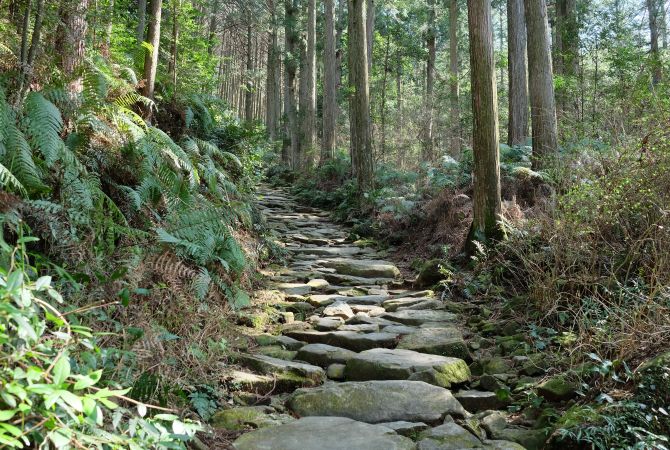
Day hikes are within easy reach of all of Japan's cities
Easy day hikes to take from Japan's major cities
Japan's capital features plenty of easy day hikes that still fall within the borders of the metropolis. A popular option is Mt. Takao, a short train ride from Shinjuku Station. Visitors can choose from eight paths up the mountain, each offering a different difficulty level. Set aside some time to enjoy the natural hot springs at the foot of the mountain, or gorge yourself on the buffet at the beer garden that opens in summer.
Getting to Mt. Mitake takes a little bit more time—expect to be on a train from Shinjuku for up to 2.5 hours. The scenery in this western corner of Tokyo makes it worth it. This large stretch of land features forests, gorges and some small neighborhoods to explore. Part of the appeal is a popular shrine that many Japanese hikers visit, but the trails themselves also reveal plenty of natural beauty. One of the highlights of walking Mt. Mitake is going into the lower areas and seeing the waterfalls and rivers.
When Tokyoites need a break from the city, many people head straight to Nikko in nearby Tochigi Prefecture. Part of the appeal lies in the colorful temples found in this area, along with a handful of hot springs and shops selling traditional crafts. For those wanting to explore nature, Nikko's Lake Chuzenji offers scenic hiking trails alongside its streams. Rising on the north bank of the lake is Mt. Nantai, providing a slightly tougher challenge for day trip hikers. Not far from there is Senjogahara, a spacious, marshy plateau with spectacular views when the autumn colors are at their best.
Kamakura is south of Tokyo. This coastal town provides warmer climes, all sorts of delicious food and a famous Buddha statue attracting people from around the world. But Kamakura also offers hiking trails cutting through the region's lush forests. The bulk of them are relatively short but beautiful, passing by numerous temples—and temperatures are more accommodating than the ones you'd find up north. Many visitors explore the Daibutsu Hiking Trail, a short trail that connects various temples via a pleasant wooded area.
One of the most famous pilgrimage routes in Japan is just a short trip away from Osaka, in the Kansai region. Mt. Koya, in Wakayama Prefecture, is known for its temples and religious structures, which offer you the chance to live like a monk for a couple of days. The main path up the mountain is the Koyasan Choishi Michi trail, stretching from the bottom up to the main area.
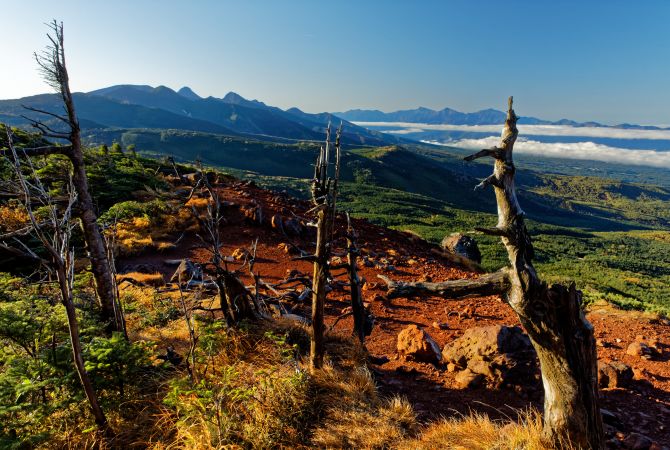

There are hiking opportunities all year round
Mt. Yoshino , in Nara Prefecture, is a lovely hike at any time of the year. It's a relatively straightforward climb to the summit, passing through a traditional-style town and various shrines and temples along the way. To experience the beauty of Mt. Yoshino, you need to go in the spring when the cherry blossoms are in full bloom. The hike up to the top becomes awash with pink in mid-April, which makes it one of the most famous spots in Japan to see sakura. Crowds will be heavy, but it's worth it to see how stunning the trees look.
Minoo Park is on the outskirts of Osaka. After a 25-minute train ride from Umeda Station, visitors can hike along a valley bordered by waterfalls and trees. It's a straightforward path to follow, taking around 45 minutes. Like many of these spots, Minoo Park comes alive in fall, when everything becomes blanketed with red, orange and yellow leaves. Make sure to buy a “momiji tempura” while you walk—a rare opportunity to try a deep-fried maple leaf.
Kyoto, meanwhile, has plenty to see within the city limits, but travel just 30 minutes north and you'll reach the charming mountain towns of Kurama and Kibune. Both Kurama and Kibune are relatively laid back, and offer short hiking trails in the mountains between the two, which will take you away from the busy urban areas. Kurama Mountain Temple and Kifune Shrine are both a famous temple and shrine with hiking paths leading to them. Swing by Kurama Onsen afterward to relax and freshen up after your uphill hike.
Fushimi Inari Taisha Shrine, in south Kyoto, feels like an escape from the city. This famous sightseeing spot is best known for its 10,000 orange torii gates, which line the path leading up to the religiously significant Mt. Inari. Whether passing underneath those gates or opting for an uncovered route, all roads lead to the summit. The three-hour walk includes many smaller shrines as well as stands selling a variety of tasty food for those who could use a break. When you reach Yotsutsuji intersection about halfway up, stunning views of Kyoto await you.
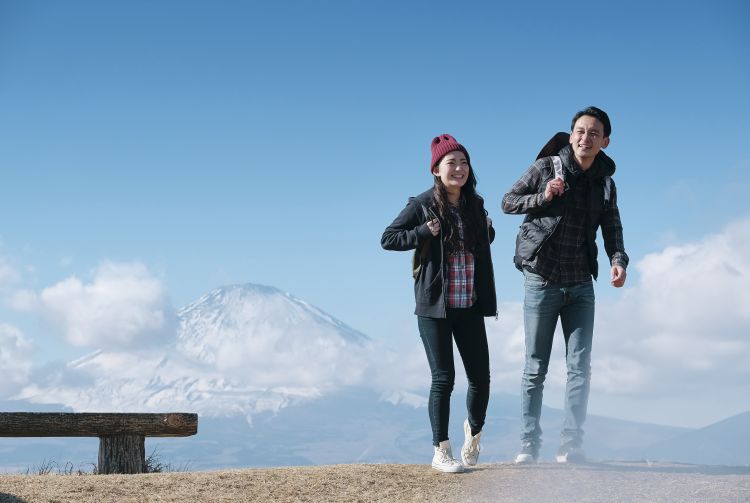
Hiking in Japan is one of the best ways to discover its beauty
Tips to know before hitting the trails
On the whole, hiking in Japan is similar to anywhere else in the world, with the same considerations. However, there are some country-specific notes to keep in mind.
A familiar sound on any trail in Japan is the bear bell. Many Japanese hikers attach a small bell to their bags or clothes to keep bears away. Beware that in some places like Hokkaido, and even areas around Tokyo, bears can be a concern.
More threatening in the wild are giant hornets, known as “suzumebachi” in Japanese. While these insects don't go out of their way to attack people, getting too close to their nests can result in them getting defensive.
Finally, accommodations are limited on many hiking trails. It is recommended to reserve in advance.




















































